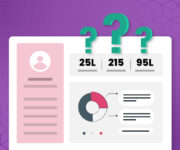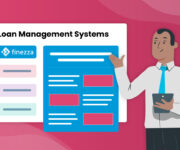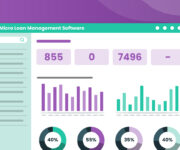Selecting the right Loan Management Software (LMS) can make or break a lending institution’s operational efficiency, compliance adherence, and ability to scale. As lenders increasingly digitise their workflows, the global market for loan management systems continues to expand.
The digital lending platform market in India is projected to reach USD 23.77 billion by 2030, growing at a CAGR of 30.2% from 2025 to 2030.
Many lenders concentrate on surface-level features alone, overlooking critical questions that determine long-term success. It’s not merely what an LMS can accomplish today but also how effectively it reflects institutional strategy, operational workflows, and future growth plans.
Questions Lenders Should Ask Before Choosing a Loan Management Software
Selecting the right Loan Management Software requires asking the right questions that go beyond features and pricing. Below are the most frequently missed, yet essential, ones:
1. Does the LMS align with your lending model and risk appetite?
Every lender operates differently. Some specialise in high-volume short-term lending, others handle niche SME or secured lending. Your LMS must support custom workflows, risk rules, and repayment schedules that fit your institution’s specific portfolio.
Avoid one-size-fits-all solutions. If your software can’t model the subtleties of your lending policy, it can compromise compliance or create operational inefficiencies.
2. How flexible is the LMS in adapting to regulatory changes?
With RBI directives, digital lending standards, and KYC requirements evolving frequently, regulatory compliance has become foundational and no longer optional. However, many lenders are impeded by legacy or in-house systems that take months to adapt to new rules.
A modern LMS should provide real-time updates, configurable compliance workflows, audit trails, and data localisation capabilities. Ask the vendor how quickly they can deliver updates with the introduction of new regulations.
3. Can the LMS scale with future growth plans?
An LMS that handles 1,000 loans a month may falter when scaled to 10,000. As lending operations expand across geographies, product types, or strategic partnerships, the system must scale effortlessly, without repetitive rebuilds and expensive interruptions.
Choose platforms with cloud-native architecture, microservices-based agility, and open, pay-as-you-grow pricing. The software should scale linearly, without hidden infrastructure or integration expenses.
4. Does the LMS integrate well with external partners and tools?
No lender operates in isolation. From credit bureaus, GST and PAN verification to collections agencies and analytics tools, your LMS should plug into the full ecosystem effortlessly.
Finezza’s platform has 50+ pre-built integrations, covering all major credit bureaus (CIBIL, CRIF, Experian, Equifax), payment gateways (Paytm, RazorPay, GooglePay), KYC providers (NSDL, Karza, IDfy), and banking APIs.
Assess API accessibility, webhook support, and real-time data sync.
An LMS relying on manual data transfer becomes a liability, hindering efficiency in today’s integrated fintech stack with outdated workflows and risks.
5. What does the implementation and onboarding timeline look like?
Even the most sophisticated software fails if delays or poor handling disrupt its implementation. It is essential to evaluate the complete rollout process, including how long it will take to go live and what level of support will be provided for data migration, sandbox testing, and user acceptance testing (UAT).
Vendors that offer hands-on onboarding, dedicated success managers, and clear service level agreements (SLAs) for go-live timelines typically accelerate adoption and reduce time-to-value significantly.
6. Is the LMS user-friendly for both borrowers and internal teams?
Usability is at the heart of an effective LMS. A truly user-friendly LMS should offer intuitive navigation, a minimal learning curve, and clear workflows that simplify lending operations end-to-end.
For borrowers, this implies a smooth application journey, real-time loan status updates, and trouble-free document uploads. For internal teams, whether in underwriting, operations, or collections, the platform must enable seamless task automation, visual dashboards, and effortless accessibility, without too much toggling or training.
7. How robust is the data security and privacy framework?
With increasing attention to data handling, the LMS must comply with the highest data security standards, including ISO 27001, SOC 2, and country-specific legislations like India’s DPDP Act.
Look for role-based access control, data encryption (in transit and at rest), and geo-fencing of data storage. Don’t forget to ask about the vendor’s incident response plan and past breaches, if any.
8. Does it support real-time monitoring and reporting?
Efficient decision-making is possible only when data is visible and actionable. A robust Loan Management Software should include live dashboards, SLA alerts, and visual trackers to monitor operational performance across all functions.
The ability to segment and filter data by location, branch, loan product, or stage enables executives to identify bottlenecks and optimise workflows. Without visibility, growth strategies tend to be reactive, not data-driven.
9. What kind of post-implementation support is available?
Even after go-live, your LMS will require ongoing updates, user support, and technical resolution. Understand what post-implementation support is included, which covers 24/7 helpdesk access, an account manager, and defined turnaround times for issue resolution.
A structured success framework with periodic reviews and feedback loops helps align the platform with evolving business needs and regulatory developments.
10. Is the platform built for future technology integration?
Lending is no longer static. With technologies like account aggregation, AI-based risk scoring, embedded credit, and real-time compliance becoming mainstream, your LMS must be ready for what’s next.
Go for a platform with a strong product roadmap that incorporates new technologies to support models such as BNPL, co-lending, or marketplace lending.
An LMS with future tech integration and innovation ensures you avoid retrofitting archaic tools, supporting lending evolution with scalable solutions.
Key Takeaway
Choosing a Loan Management Software is not just a functional, checklist-driven decision. Platforms need to be evaluated to determine how well they align with lending models, regulatory adaptability, scalability, ecosystem readiness, and future innovations.
Finezza’s Loan Management Software is designed to meet these expectations. Its critical features are:
- Cloud-native infrastructure for scalable operations
- Seamless API integrations with credit bureaus, PAN/GST, and KYC platforms
- Automated EMI schedules, NPA tracking, and audit-ready logs
- Built-in RBI compliance modules
- Real-time dashboards and modular workflows
Schedule a demo today to explore more.




Leave a Reply